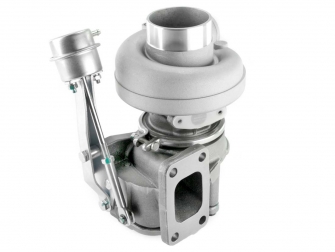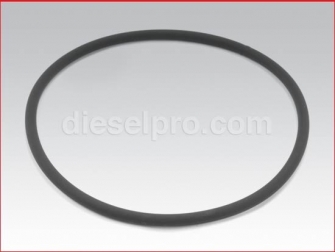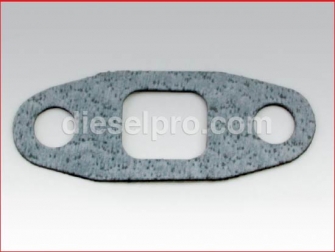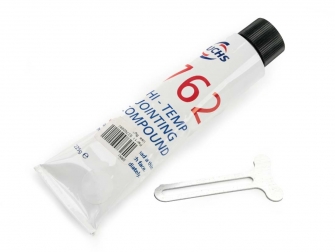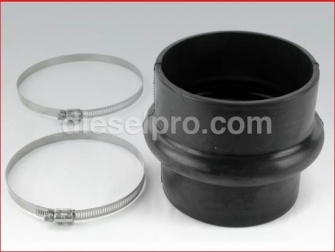Cummins ISB 4.5 Parts for Canada - Turbo Section
 Loading...
Loading... Cummins ISB 4.5 Turbochargers and Related Components
The Cummins ISB 4.5 engine is a dependable, high-performance diesel platform used in a wide range of industrial, agricultural, and marine applications. Its efficiency and power output are significantly enhanced by its turbocharging system, which uses exhaust-driven forced induction to increase airflow to the combustion chambers. The result is improved fuel economy, greater torque, and a responsive power curve that makes the ISB 4.5 ideal for demanding workloads.
This section of the Cummins ISB 4.5 parts catalog focuses on the turbocharger and related components, offering both the main turbo unit and the supporting parts needed for installation, maintenance, and peak performance. Diesel Pro Power supplies OEM-specification components trusted by over 40,000 satisfied customers worldwide.
Understanding the Role of the Turbocharger on the ISB 4.5
The turbocharger is a precision-engineered device that captures energy from exhaust gases to spin a turbine wheel. This turbine is connected to a compressor wheel via a common shaft. As the turbine spins, it drives the compressor wheel, which forces more air into the intake manifold. In a diesel engine, more air means more oxygen, which allows for more fuel to be burned efficiently—resulting in higher power without increasing engine displacement.
Key Functions of the ISB 4.5 Turbocharger:
-
Boosts intake air pressure, improving combustion efficiency
-
Increases engine horsepower and torque output
-
Improves throttle response under load
-
Reduces fuel consumption when operating at optimal boost levels
-
Helps control exhaust emissions by promoting more complete fuel burn
Main Turbocharger for Cummins ISB 4.5
The ISB 4.5 turbocharger is built to withstand extreme heat and high rotational speeds—often exceeding 100,000 RPM. Its housing is cast from high-temperature-resistant alloys, and its bearings are lubricated and cooled by engine oil. Maintaining oil quality is critical to extending the turbocharger’s life.
Why Choose Diesel Pro Power’s ISB 4.5 Turbo:
-
Meets or exceeds original equipment manufacturer (OEM) specifications
-
Balanced and tested for long-term reliability
-
Designed for precise fitment on Cummins ISB 4.5 engines
-
Built for heavy-duty industrial and marine service
Signs Your Turbocharger May Need Replacement:
-
Noticeable drop in engine power or acceleration
-
Excessive exhaust smoke (black, blue, or white)
-
Unusual whining, whistling, or grinding noises from the turbo
-
Oil leaks around turbo seals or connections
-
Boost pressure readings lower than normal
Intake Manifold Cover Gasket for ISB 4.5
The intake manifold cover gasket is a small but essential part of the turbo system. It seals the joint between the intake manifold and its cover, preventing unmetered air from entering the system. On a turbocharged engine like the ISB 4.5, even minor leaks can disrupt boost pressure and affect performance.
Benefits of a New Intake Manifold Cover Gasket:
-
Maintains proper boost pressure from the turbocharger
-
Prevents contaminants from entering the intake tract
-
Reduces the risk of lean air-fuel mixtures that can cause detonation
-
Helps ensure smooth idling and acceleration
A worn or damaged gasket can lead to air leaks, reduced efficiency, and increased fuel consumption. Replacing it as part of regular maintenance or during turbo servicing is recommended.
Aftercooler O-Ring for ISB 4.5
After the turbocharger compresses air, it becomes heated due to compression. The aftercooler (also called an intercooler) cools this compressed air before it enters the engine, increasing air density and improving combustion. The aftercooler O-ring seals the connections within this system.
Importance of a Properly Functioning Aftercooler O-Ring:
-
Prevents boost pressure loss between turbocharger and intake manifold
-
Maintains proper intake air temperature and density
-
Reduces engine strain by ensuring optimal combustion conditions
-
Helps prevent oil mist and boost leaks that could damage the turbo
A damaged O-ring can cause significant performance loss, higher exhaust temperatures, and decreased fuel efficiency.
Turbo Oil Drain Gasket for ISB 4.5
The turbocharger relies on a steady flow of oil to lubricate and cool its bearings. After circulating through the turbo, this oil must be returned to the engine’s crankcase. The turbo oil drain gasket seals the return line, preventing leaks.
Benefits of Replacing a Worn Turbo Oil Drain Gasket:
-
Prevents oil loss and contamination
-
Maintains proper lubrication to extend turbo life
-
Keeps the engine bay clean by reducing oil spray or residue
-
Reduces the risk of turbo bearing failure due to insufficient lubrication
Oil leaks from the drain connection are often an early warning sign of gasket failure and should be addressed promptly.
High-Temperature Jointing Compound for Turbo Applications
Turbocharger connections operate in extreme temperature ranges, often above 500°C. A high-temperature jointing compound is essential for sealing turbo flanges, exhaust manifold connections, and other heat-exposed joints.
Advantages of Using a High-Temperature Jointing Compound:
-
Withstands extreme heat without breaking down
-
Provides a gas-tight seal to prevent exhaust leaks
-
Ideal for areas subject to vibration and thermal cycling
-
Suitable for both Cummins and Detroit Diesel turbo systems
This compound is often applied during turbo installation or manifold servicing to ensure long-term, leak-free operation.
Hump Hose for Cummins Turbo Applications
The hump hose connects the turbo outlet to the charge air piping or aftercooler inlet. Its unique "hump" design allows for slight movement and misalignment while withstanding high boost pressures.
Benefits of a Quality Turbo Hump Hose:
-
Flexible yet strong to absorb vibration
-
Resistant to heat and oil exposure
-
Maintains a secure seal under varying boost pressures
-
Extends the life of connected components by reducing mechanical stress
A worn or cracked hump hose can lead to boost leaks, loss of power, and higher fuel consumption.
Common ISB 4.5 Turbo System Failures and Symptoms
Even with proper maintenance, turbo systems can experience wear over time. Common failure points include:
-
Compressor Wheel Damage – Caused by foreign object ingestion or dirt from a failing air filter.
-
Bearing Wear – Often due to poor oil quality or low oil pressure.
-
Seal Leaks – Leading to oil loss into the intake or exhaust system.
-
Boost Leaks – From cracked hoses, failed gaskets, or loose clamps.
-
Excessive Shaft Play – A sign of internal wear requiring turbo replacement.
Warning Signs to Watch For:
-
Loss of power under load
-
Loud turbo whistle or metallic noises
-
Excess smoke in exhaust
-
Oil residue in the intake tract
-
Higher than normal exhaust gas temperatures (EGT)
Turbocharger Maintenance for ISB 4.5 Engines
A proactive maintenance schedule can dramatically extend the life of your turbocharger:
-
Change Engine Oil and Filters Regularly – Clean oil prevents bearing wear.
-
Use High-Quality Air Filters – Stops debris from damaging compressor blades.
-
Warm Up and Cool Down Properly – Avoid revving a cold engine and allow idle time before shutdown to cool the turbo.
-
Inspect Hoses and Clamps – Replace any that are cracked, hardened, or leaking.
-
Check for Unusual Noises – Whining or rattling may indicate early failure.
Installation Best Practices for ISB 4.5 Turbochargers
When installing a replacement turbo or related components, following correct procedures is critical:
-
Always flush the oil feed line to remove contaminants.
-
Pre-lubricate the turbo bearings before starting the engine.
-
Torque all fasteners to Cummins specifications.
-
Use new gaskets and seals during installation.
-
Prime the engine oil system before applying load.
Compatibility Across Cummins Engine Families
Many turbo-related parts for the ISB 4.5 are also used on similar Cummins engines such as the ISB 6.7, QSB 4.5, and QSB 6.7. Components like aftercooler O-rings, turbo oil drain gaskets, and hump hoses are often interchangeable, providing flexibility for fleet operators who manage multiple engine models.



 Free US Calls: 1-888-433-4735
Free US Calls: 1-888-433-4735 International: 305-545-5588
International: 305-545-5588






